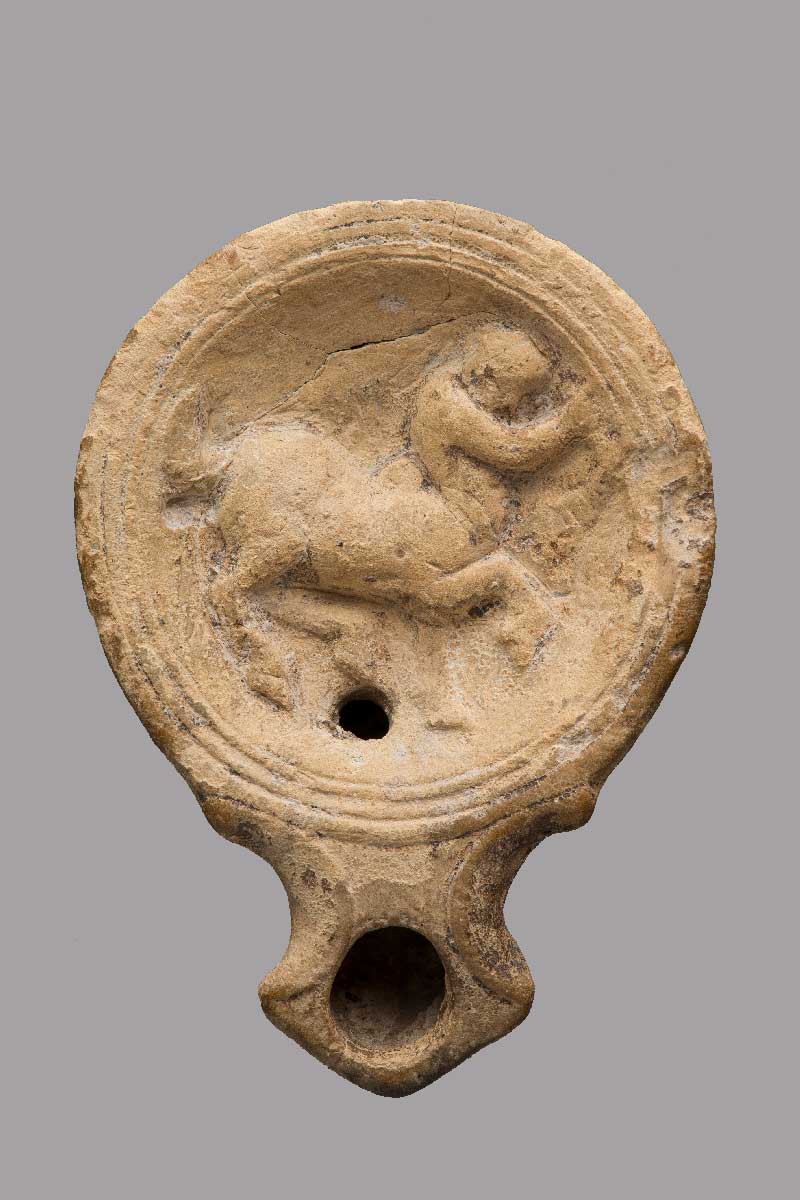The Roman House at Hopkins | The Art of Light
Centaur Playing the Lyre
By Michele Asuni


Measurements: Length: 9.3 cm, Width: 6.6 cm Height: 1.9 cm
Material: Ceramic
Culture/Date: Roman, 1st c. BCE – 1st c. CE
Provenance: Tyre, Syria
This is a mold-made pottery lamp with a volute nozzle. The discus scene features a centaur playing a lyre. The filling hole is beneath the centaur’s hind feet. The lamp had a brown, glossy finish that has largely worn off. On the lamp’s base is an inscription that records the potter’s name: FAVSTI. A Roman reader would have understood this word to mean “from Faustus’ workshop.” Scholars have argued that this lamp maker was active between the end of the Augustan period and the reign of Tiberius. He probably was an itinerant potter who traveled from Italy to Cyprus, Petra (in modern-day Jordan), and then Egypt. This would explain the varied provenance of the more than 80 FAVSTI lamps catalogued by museums around the world. Further examples can be seen at the British Museum (Lamp Q1886) and at the Metropolitan Museum of Art (74.51.2167, 74.51.2169, 74.51.2164, 74.51.2162)